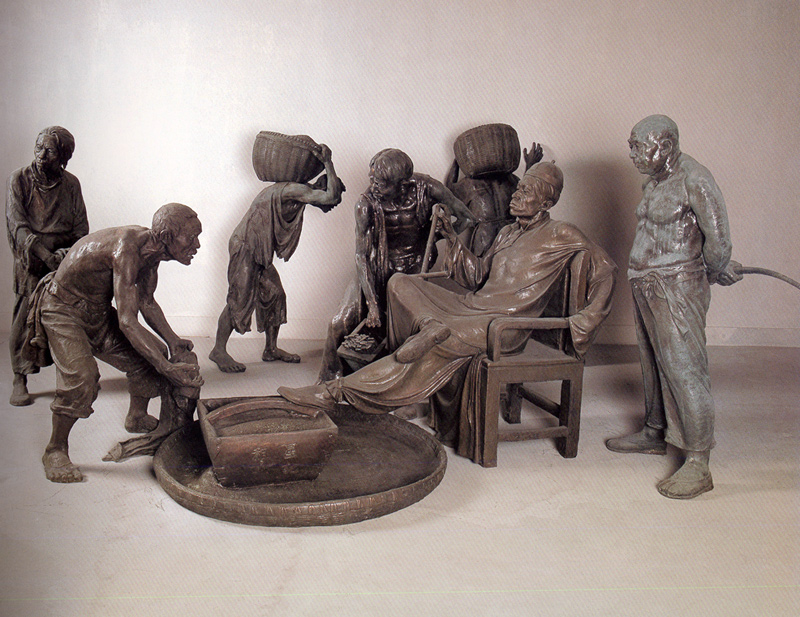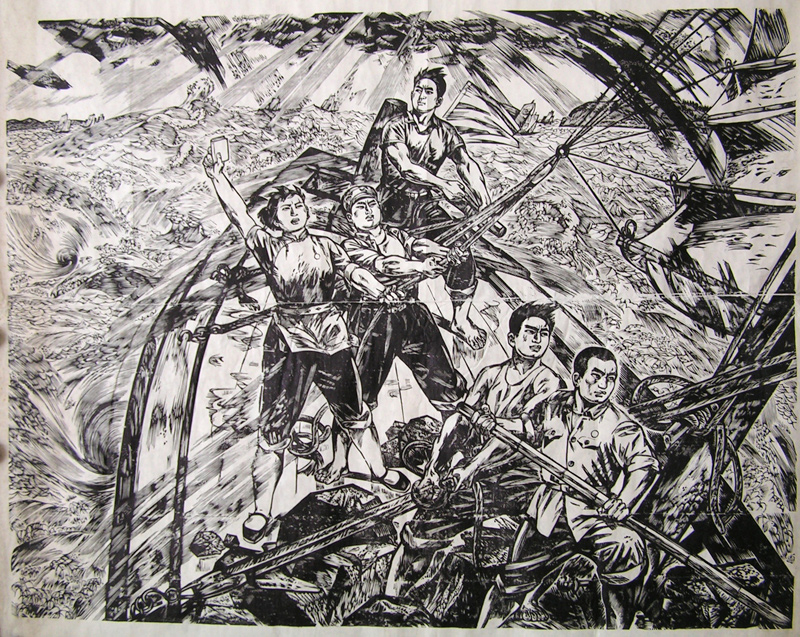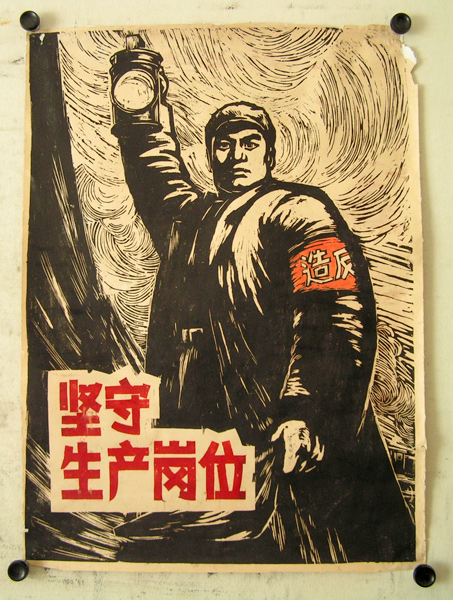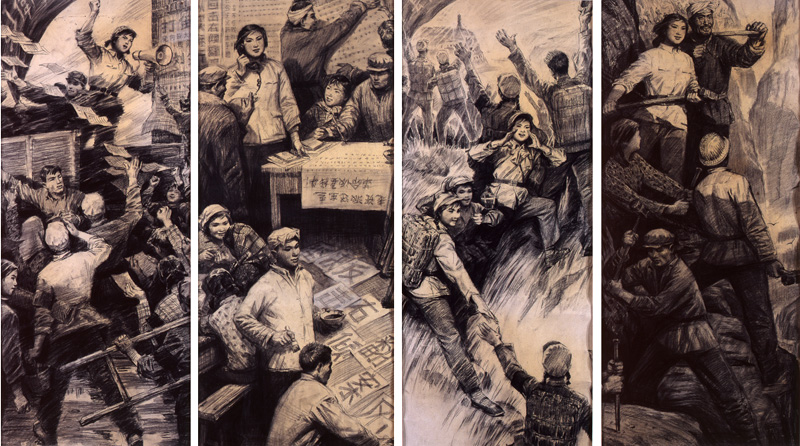To Rebel is justified
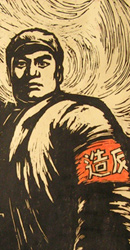 Three months after the official launch of the Cultural Revolution in May 1966, one million youths gathered at Tiananmen Square to attend Mao’s first meeting with Red Guards. The Red Guards were a mass movement of civilians, initially radical high school and university students. Their manifesto stated that they wanted to turn the old world upside down, smash it to pieces, pulverize it, create chaos and make a tremendous mess, the bigger the better! Red Guards were encouraged to be revolutionary through the destruction of the four olds: the old ideas, old cultures, old customs, and old habits of the exploiting classes. Across the country, art schools and universities were closed down and cultural heritage and antiquities were destroyed. One estimate cites that 4,922 of the 6,843 officially designated places of cultural and historical interest in Beijing were destroyed, mostly in 1966. The following year, Red Guards began to stage large-scale public art exhibitions. The drawings, paintings, posters, and woodblock prints in this section convey the fervor of what could be considered one of the largest and most destructive youth movements of the twentieth century, concurrent with those in Paris and Berkeley.
Three months after the official launch of the Cultural Revolution in May 1966, one million youths gathered at Tiananmen Square to attend Mao’s first meeting with Red Guards. The Red Guards were a mass movement of civilians, initially radical high school and university students. Their manifesto stated that they wanted to turn the old world upside down, smash it to pieces, pulverize it, create chaos and make a tremendous mess, the bigger the better! Red Guards were encouraged to be revolutionary through the destruction of the four olds: the old ideas, old cultures, old customs, and old habits of the exploiting classes. Across the country, art schools and universities were closed down and cultural heritage and antiquities were destroyed. One estimate cites that 4,922 of the 6,843 officially designated places of cultural and historical interest in Beijing were destroyed, mostly in 1966. The following year, Red Guards began to stage large-scale public art exhibitions. The drawings, paintings, posters, and woodblock prints in this section convey the fervor of what could be considered one of the largest and most destructive youth movements of the twentieth century, concurrent with those in Paris and Berkeley.
Intro | Mao | To Rebel | Never Forget | Up to the Mountains | Archive | Long March
1974
Fiberglass
Dimensions Variable
Art Museum of Sichuan Fine Arts Institute
Using Mao’s Thought to Fight with the Storm
1973–74
Woodblock print
57 1/16 x 63 in. (145 x 160 cm)
Collection of Yao Zhonghua
This woodblock print was based on a news report about a group of students caught in a storm at sea. As the story was related, the students held fast to Mao’s Little Red Book to survive the rough waters and regain control of their boat.
Jiang Tiefeng graduated from the Central Academy of Fine Arts and taught at the Yunnan Art Academy. Today, he is one of China’s most well-known children’s book illustrators and lives in San Diego.
Standing Firm on Production Work Post
1966
Woodblock print mounted on rice paper
41 3/8 x 29 9/16 in. (105 x 75 cm)
Collection of Yao Zhonghua
This woodblock print was made in the early years of the Cultural Revolution to encourage workers to fulfill their revolutionary responsibilities by remaining at their jobs instead of leaving them to participate in the Cultural Revolution.
Ma Zhensheng graduated from the Central Academy of Fine Arts in 1964 and studied under renowned painter Jiang Zhaohe (1904–1986).
Youth
1972
Four panels, charcoal on panel
30 5/16 x 13 13/16 in. (77 x 35 cm)
Collection of Xue Song
This four-panel drawing depicts some of the Red Guard activities at the beginning of the Cultural Revolution.
Zhang Songnan graduated from the Central Academy of Fine Arts in Beijing and later worked there as a professor in the Mural Department and as Assistant to the President. He immigrated to Canada in 1988 and currently lives in Montreal. Tang Xiaohe graduated from Hubei Institute of Fine Arts in 1965 and currently lives in Wuhan.
Intro | Mao | To Rebel | Never Forget | Up to the Mountains | Archive | Long March

